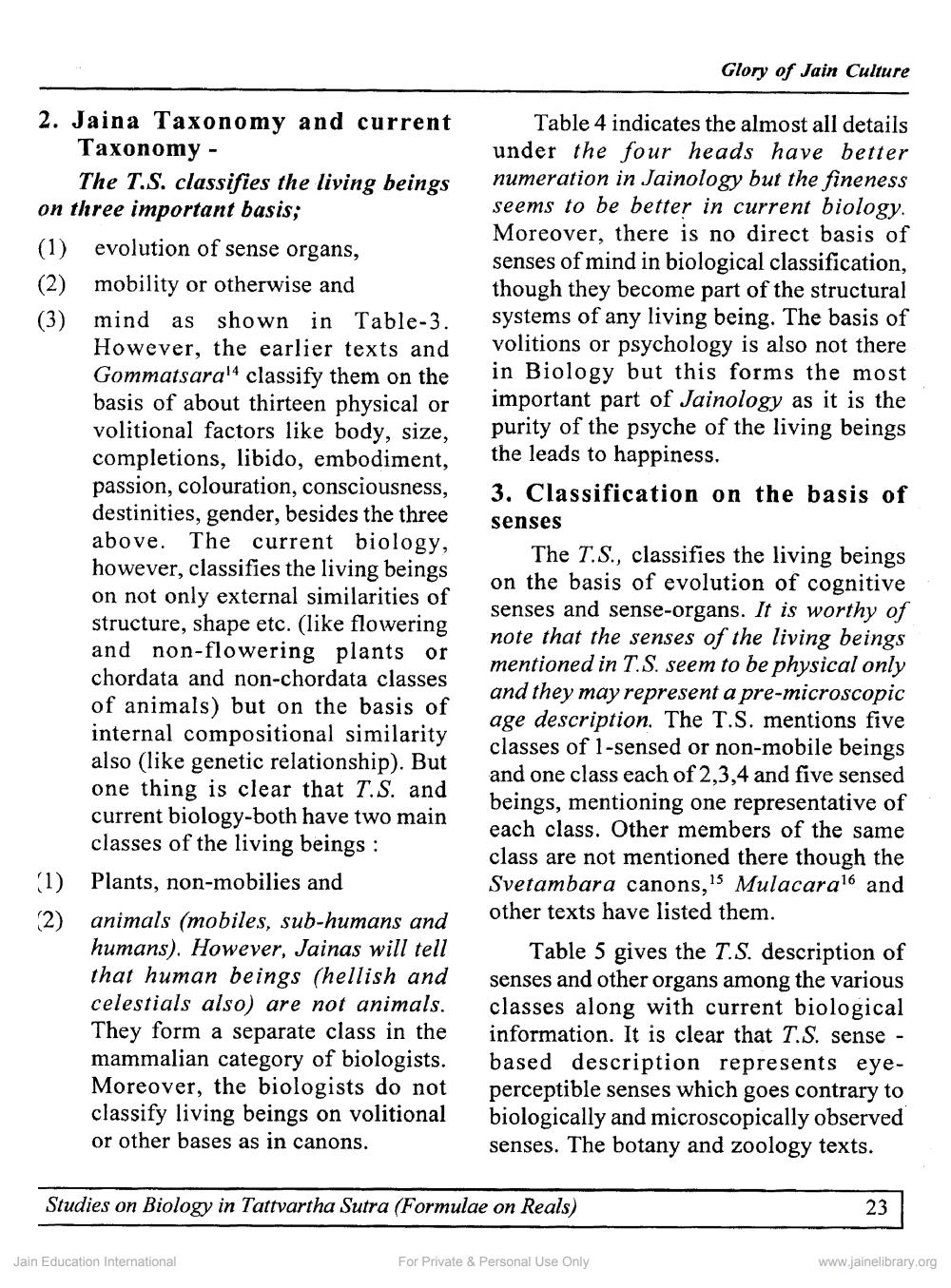Book Title: Studies on Biology in Tattvartha Sutra Author(s): N L Jain Publisher: Z_Sumanmuni_Padmamaharshi_Granth_012027.pdf View full book textPage 7
________________ Glory of Jain Culture 2. Jaina Taxonomy and current Taxonomy - The T.S. classifies the living beings on three important basis; (1) evolution of sense organs, (2) mobility or otherwise and (3) mind as shown in Table-3. However, the earlier texts and Gommatsaral4 classify them on the basis of about thirteen physical or volitional factors like body, size, completions, libido, embodiment, passion, colouration, consciousness, destinities, gender, besides the three above. The current biology, however, classifies the living beings on not only external similarities of structure, shape etc. (like flowering and non-flowering plants or chordata and non-chordata classes of animals) but on the basis of internal compositional similarity also (like genetic relationship). But one thing is clear that T.S. and current biology-both have two main classes of the living beings : Plants, non-mobilies and (2) animals (mobiles, sub-humans and humans). However, Jainas will tell that human beings (hellish and celestials also) are not animals. They form a separate class in the mammalian category of biologists. Moreover, the biologists do not classify living beings on volitional or other bases as in canons. Table 4 indicates the almost all details under the four heads have better numeration in Jainology but the fineness seems to be better in current biology. Moreover, there is no direct basis of senses of mind in biological classification, though they become part of the structural systems of any living being. The basis of volitions or psychology is also not there in Biology but this forms the most important part of Jainology as it is the purity of the psyche of the living beings the leads to happiness. 3. Classification on the basis of senses The T.S., classifies the living beings on the basis of evolution of cognitive senses and sense-organs. It is worthy of note that the senses of the living beings mentioned in T.S. seem to be physical only and they may represent a pre-microscopic age description. The T.S. mentions five classes of 1-sensed or non-mobile beings and one class each of 2,3,4 and five sensed beings, mentioning one representative of each class. Other members of the same class are not mentioned there though the Svetambara canons, 15 Mulacara16 and other texts have listed them. Table 5 gives the T.S. description of senses and other organs among the various classes along with current biological information. It is clear that T.S. sense - based description represents eyeperceptible senses which goes contrary to biologically and microscopically observed senses. The botany and zoology texts. Studies on Biology in Tattvartha Sutra (Formulae on Reals) 23 Jain Education International For Private & Personal Use Only www.jainelibrary.orgPage Navigation
1 ... 5 6 7 8 9 10 11 12 13 14 15 16 17 18
